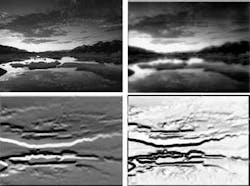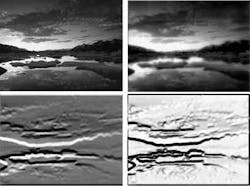Cellular device processes at ultrafast speeds
Very-high-speed frame-rate image processing is an unsolved problem using current digital systems of affordable price and size. Both the limited computational power and the I/O bottleneck represent major obstacles in digital systems. To overcome these problems, AnaLogic Computers Ltd. (Budapest, Hungary; www.analogic-computers.com) introduced a cellular visual microprocessor (CVM) at the VISION 2002 show in Stuttgart, Germany.
null
Cellular-visual-microprocessor technology offers a parallel approach to solving these problems. When a visual microprocessor chip is used as a focal-plane array, the computational load automatically drops close to zero. In this way, the CVM acts as a focal-plane CVM that can acquire image frames through the optical input, transfer them to the processor elements, and perform analysis, all in parallel.
The cellular processor consists of a large number of identical analog processing elements and optical sensors arranged as a regular grid. It can process either gray-scale or binary valued images. Based on the internal structure and functionality of the processing elements, the interconnection pattern, and the weighting process, a large number of various cellular network types can be implemented.
AnaLogic's CVMs have been implemented in an array called ACE4k—a product of AnaFocus Ltd. (Seville, Spain; www.anafocus.com), AnaLogic's strategic partner. The device implements on-chip distributed image memories, a programmable cellular neural-network processing core, and a programmable logic-processing unit. AnaLogic currently offers two products—the Aladdin System cellular vision computer (CVC) and the Aladdin Stack, which use AnaFocus CVM processors. The first one is designed for the development environment, whereas the second is the industrial application environment of the ACE4k chip.
The Aladdin CVC uses the ACE4k chip in a development system hosted by a PC running Windows NT/2000. The architecture of the visual computer consists of a 250-MHz 320C6202 DSP from Texas Instruments (Dallas, TX; www.ti.com). It provides a PCI interface for the host PC and drives the CVM, feeds it with data, and controls its operation. The CVC processes video images on-line from up to 12 PAL- or NTSC-based embedded frame grabbers. CNNRUN, a Windows-based host program, is used to transfer images from the hard drive or the frame grabber to the visual computer and can also display and save results.

